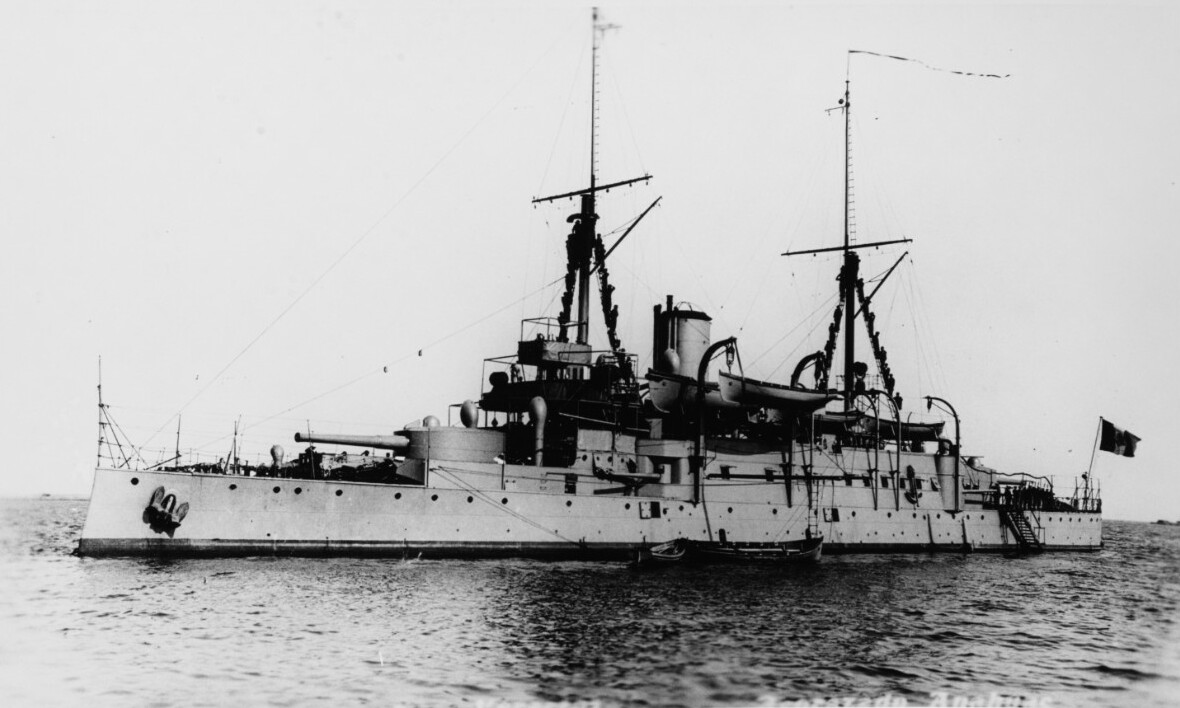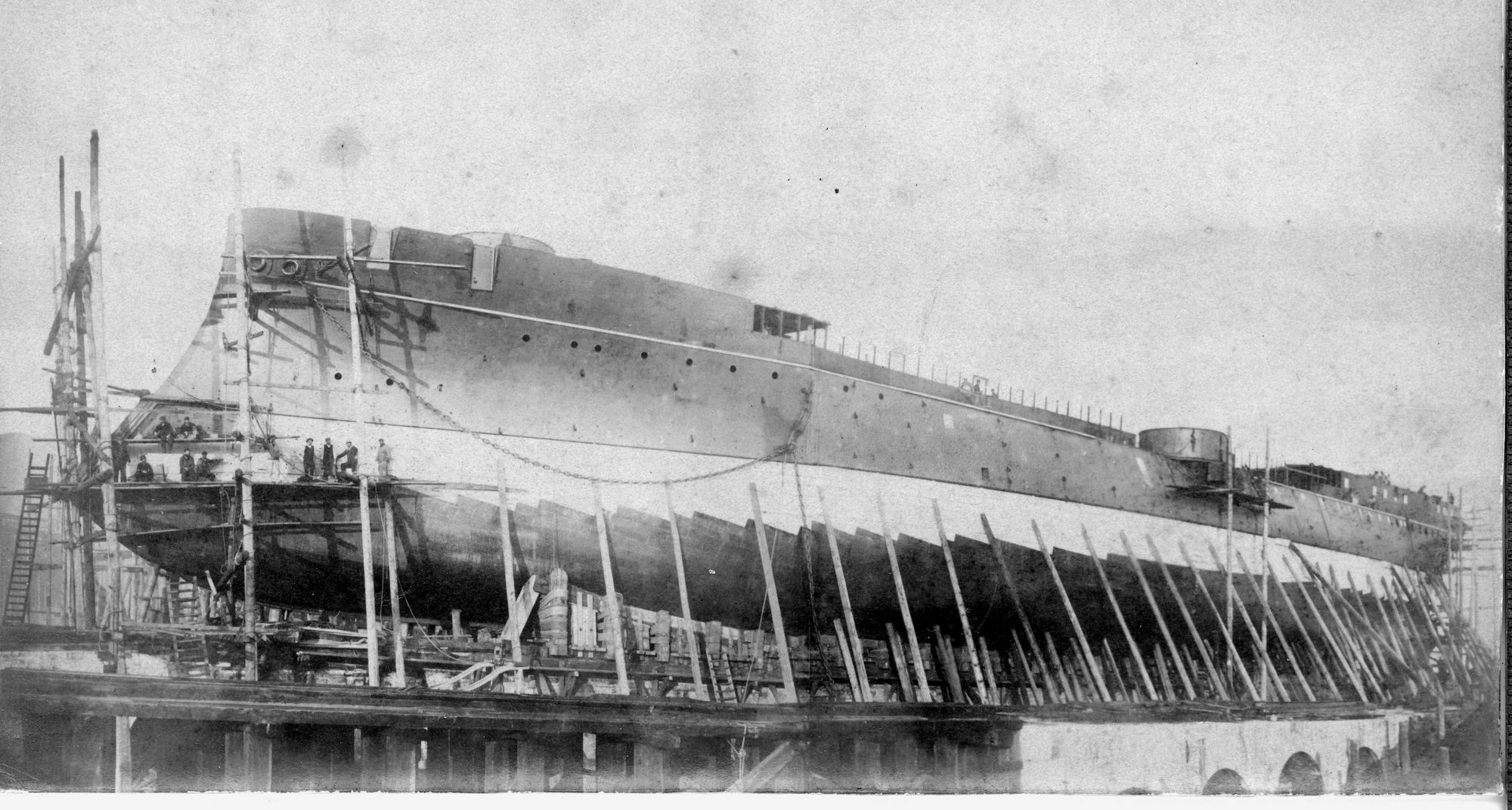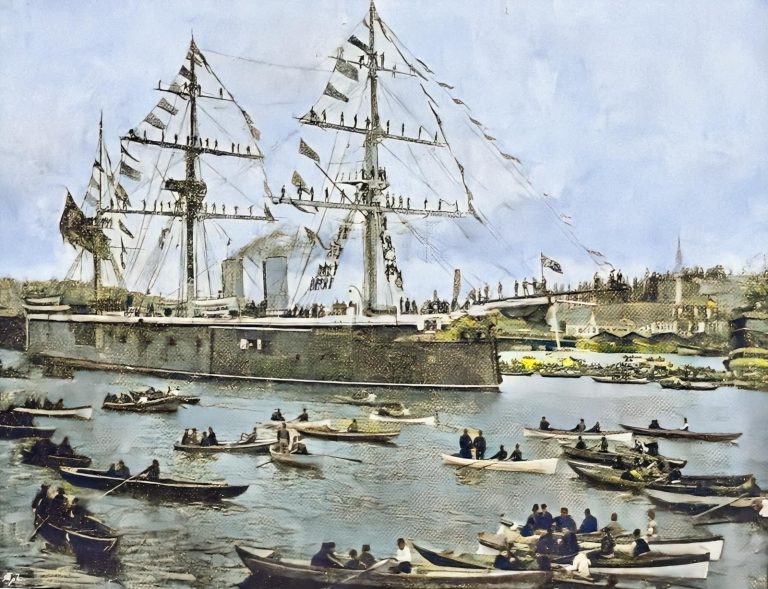Golden Journal No. 52
Russo-Japanese War: Shopping Spree
Ships of the Shopping Spree, Part 2
by Mike Bennighof, Ph.D.
September 2024
 Shortly after the turn of the last century, several interlocking naval arms races in South America cooled, just as the diplomatic conflict between Russia and Japan over Korea began to slide toward open war. That presented the would-be participants with the opportunity to quickly increase their naval strength, if they could convince the owners to sell, and if they could both out-bid and out-maneuver their rivals to obtain the warships. Shortly after the turn of the last century, several interlocking naval arms races in South America cooled, just as the diplomatic conflict between Russia and Japan over Korea began to slide toward open war. That presented the would-be participants with the opportunity to quickly increase their naval strength, if they could convince the owners to sell, and if they could both out-bid and out-maneuver their rivals to obtain the warships.
That’s the focus of Golden Journal No. 52: Russo-Japanese War Shopping Spree. The little book, a Gold Club exclusive, includes 20 new ship pieces, scenarios so you can play with them, and best of all, a little game-within-a-game auction game so you can bid for them before the fighting starts.
Our look at the stakes began with Part One. Let’s resume the tour:
The Chilean Cruisers
British firms dominated the early days of the Chilean-Argentine naval rivalry: the late 1880’s and early 1890’s. Vickers’ shady salesman Basil Zaharoff of course appeared on the scene, applying his “Zaharoff System” of stirring up conflict between two nations through stories planted in the press and rumors whispered in rival capitals. And then selling arms to both sides.
Both Argentina and Chile fell for the scam, each buying three protected cruisers from the British firm Armstrong. Under the collusion arrangement between Vickers and Armstrong (not yet illegal at the time), orders from nations in the Southern Cone went to Armstrong, though Zarahoff still got his commission.

The Chilean O’Higgins (foreground) and Esmerelda..
The Chileans then sold one of their cruisers, Esmerelda, to the Japanese, bringing down the combine’s wrath: the companies did not wish to see a market develop for used warships, which would reduce the demand for new ones. Zarahoff browbeat the Chileans into repenting by buying a larger, more capable, and much more expensive Esmerelda to replace the ship sold to Japan.
The new Esmerelda, designed by Sir Philip Watts (who drafted many of the era’s best-known warships, including HMS Dreadnought), drew heavily on the previous Chilean and Argentine cruisers, most of which were also his work. She weighed in at 7,000 tons, with good protection as cruisers of the time went: an armored belt 152mm (six inches) thick, and an armored deck of up to 50mm (just shy of two inches). She was quite fast at over 22 knots, and carried a strong armament of two 203mm (8-inch) and ten 152mm (six-inch) guns; if she had a weakness, it was the placement of these guns in shielded mounts rather than armored turrets, but this was the standard at the time of her design. She was one of the first ships designed to carry torpedo tubes (three of them, all underwater, one on each side and the third at the bow).
She was an impressive ship, so much so that the Argentines felt the need to switch suppliers to Ansaldo and buy a pair of armored cruisers from the Italian yard. That meant that Chile needed a second armored cruiser to match them. The Chileans wanted a ship to overpower the Italian-built vessels, and Sir Philip obliged. O’Higgins came in at 8,000 tons, and moved her main armament (four 203mm guns) to four single turrets, with ten 152mm guns, four of these in single turrets and the rest in an armored casemate battery. Plus, three torpedo tubes, one on either side and one at the bow.
She had more armor than Esmerelda: a belt of 178mm (seven inches), another 152mm (6 inches) over her machinery, and a deck of 76mm (3 inches). She was subdivided into 15 compartments for added survivability. She could make 21.6 knots, slightly less than Esmerelda, but still very fast for the day. She joined the Chilean fleet in April 1898, and immediately became the object of a bidding war between the United States and Spain, but the Chileans opted not to sell.
O’Higgins was a magnificent ship, with a magnificent price tag to match, costing almost as much as the two cruisers Argentina had ordered in Italy, combined. She remained a front-line unit until the early 1930’s, but was not scrapped until 1964.
The two Chilean armored cruisers appear in Shopping Spree as the Russian Premislav and Vozmislav, and the Japanese Kushiro and Naruse.
Daily Content includes no AI-generated content or third-party ads. We work hard to keep it that way, and that’s a lot of work. You can help us keep things that way with your gift through this link right here.
The Brazilian Coast Defenders
While Chile and Argentina entertained offers on their ships to wind down an arms race, Brazil put her coast-defense ships up for sale in hopes of funding one. While the Brazilian economy boomed in the early years of the 20th Century, the Navy looked to obtain still more funding by unloading its older ships and using the proceeds to buy new ones.

Deodoro after her eventual sale to Mexico, as Anahuac.
Following a large-scale naval mutiny in the early 1890’s, Brazil set out to re-make the service. Two modern coast-defense vessels ordered in France would be the centerpieces of this effort. Displacing just 3,100 tons, they had battleship-scale armor and an impressive armament of two 220mm (8.7-inch) and four 120mm (4,7-inch) guns. Named Deodoro and Floriano (for the two successive presidents who crushed the naval mutiny), they were quite slow, and drew ridicule from foreign naval writers for their small size.
That reaction helped spur the Navy’s willingness to sell them, and buy more impressive ships in their place. They found no buyers, but Brazil did eventually obtain recognition for, briefly, owning the world’s most powerful dreadnoughts. That’s a story for another time; Deodoro and Floriano appear in Shopping Spree as the Russian Sobaka and Briachislav and the Japanese Echigo and Kazusa.
The Leftovers
While Chile entertained offers for her new armored cruisers, she declined to sell them, offering instead the small battleship Arturo Prat (sometimes called Capitán Prat). Prat started the whole Chilean-Argentine naval arms race when Chile ordered her from a French shipyard in 1889. Though classed as a battleship, she was rather small at 6,900 tons. Her designer, Amable Lagane, drafted a ship very much like contemporary French battleships, and his work on Prat would greatly influence his own later designs (what became the standard French layout for the time came off his drawing board).

Prat under construction at La Seyne (open in new window to embiggen).
Prat had the severe tumblehome (inward curve) of her hull typical of French ships in this period, with four 9.4-inch guns in single, electrically-powered turrets in “lozenge” pattern (one each four and aft, one more on either side), and a secondary armament of eight 4.7-inch guns in four twin turrets, also electrically-powered. She also had four deck-mounted torpedo tubes. She had thick nickel-steel armor, though this was not as effective as the thinner sheets of oil-treated armor that became standard a decade later. She could make 18 knots, a surprising speed given the weight of all that armor.
All told, Prat was a very modern and impressive warship by the standards of 1889. The United States tried to buy her in 1898, but the Chileans would not sell. A few years later the Japanese came calling, and while the Chileans listened, the Japanese really wanted their newer ships and no deal would be struck.

Mesudiye, before reconstruction.
To avoid complications with Britain and the United States, neither of which approved of arms sales to belligerent nations, both Russia and Japan employed third parties to conduct negotiations. The Ottoman Empire helped both sides, in exchange for cash considerations, and its naval leaders saw a chance to unload their white elephant, the ironclad Mesudiye. Initially built in 1874 as a broadside ironclad, she had been sent to the Ansaldo yard in Genoa in 1899 for radical reconstruction as a pre-dreadnought battleship.
By March 1904 she was ready for sea trials. Ansaldo had replaced her hull, machinery, and armament, leaving little of the old ironclad beyond her name-plate. She now sported turrets for single 9-inch guns fore and aft (these were never fitted) and a dozen 5.9-inch guns in a casemate battery, plus a huge array of light guns. She could make 17 knots when first re-built, but Ansaldo appears to have re-used her wrought-iron armor rather than applying modern nickel-steel.

Mesudiye, with a cameo by Sultan Abdulaziz, after reconstruction.
She was a terrible mis-use of funds, and Turkish naval leaders knew it. They hoped that the Japanese would take her off their hands, but the Emperor’s agents dodged that bullet. Mesudiye would steam into action in the Balkan Wars, but had fallen into limited use by the time of the First World War, when she was sunk at her moorings by a British submarine.
Prat and Mesudiye appear in Shopping Spree in Japanese colors (only), as Suruga and Inaba respectively.
In our Golden Journal No. 52: Russo-Japanese Shopping Spree, you can not only play with these ships (we have 20 new pieces for them, for Great
War at Sea: Russo-Japanese War), you can also engage in the Competitive Shopping Game.
The Golden Journal is only available to the Gold Club (that’s why we call it the Golden Journal).
Click here to join the Gold Club.
See your Gold Club Insider newsletter for ordering information.
Sign up for our newsletter right here. Your info will never be sold or transferred; we'll just use it to update you on new games and new offers.
Mike Bennighof is president of Avalanche Press and holds a doctorate in history from Emory University. A Fulbright Scholar and NASA Journalist in Space finalist, he has published a great many books, games and articles on historical subjects; people are saying that some of them are actually good.
He lives in Birmingham, Alabama with his wife, three children, and new puppy. He misses his lizard-hunting Iron Dog, Leopold.
Daily Content includes no AI-generated content or third-party ads. We work hard to keep it that way, and that’s a lot of work. You can help us keep things that way with your gift through this link right here.
|
